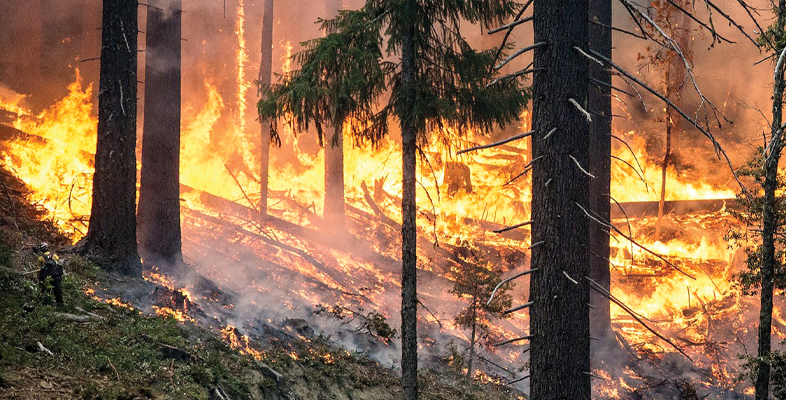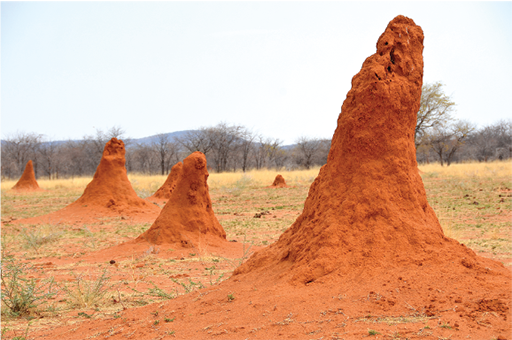3.1 Avoiding fire
Unlike plants, animals are mobile. Large mobile animals are able to move away from the fire while small agile animals are able to take refuge, for example in termite mounds (Figure 15) within the fire zone, or move to places of safety.
Soil is a good insulator so many animals take refuge in cracks or crevices or in burrows in the soil during a fire.
-
In Video 1 you saw two examples of animals that are likely to take refuge in burrows during a fire. What were these?
-
Snakes; Tortoises
There is also evidence that some animals are able to detect fires early and avoid them – a behaviour that is likely to be adaptive given the detrimental effects of fire on animals. Some species of bats and possums, for example, appear able to detect smoke even when in torpor (a temporary reduction in temperature and metabolic rate in response to food availability and ambient temperature) and move to safety (Nowack et al., 2016). Frogs appear to be able to recognise the sound of fire and move away (Grafe et al., 2002) and newts have been observed crossing fire fronts to move to unburned areas (Stromberg, 1977).

